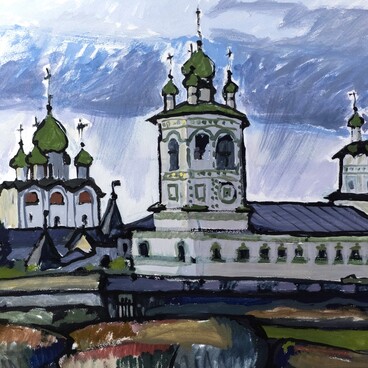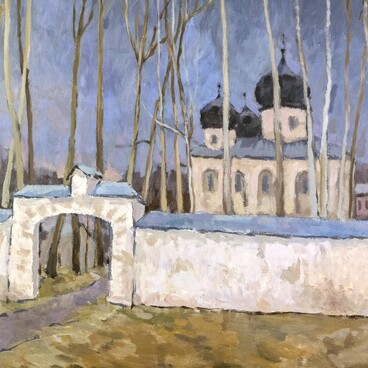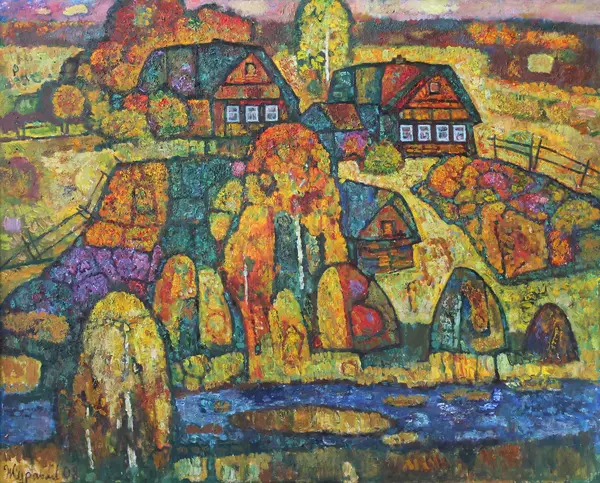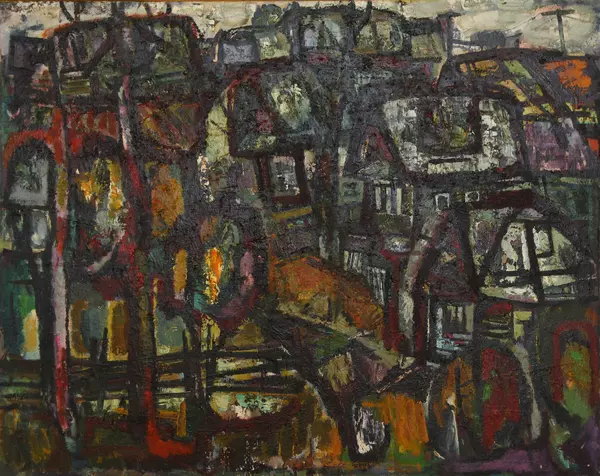The Transfiguration Church is better known as the Church of the Savior on Nereditsa Hill. It was founded in 1198 at Rurik’s Gorodische, the original residence of the princes of Novgorod. It is likely that the area located “outside” of the city was called Nereditsa.
In 1198, Prince Yaroslav Vladimirovich of Novgorod lost two sons one after another: Iziaslav died on June 4 or 5, Rostislav died on June 20. The church was founded on June 8, but is traditionally associated with the names of both brothers.
A year later, the church was fully decorated with frescoes, which are recognized as unique cultural heritage of 12th-century Russia. The writer and journalist Robert Byron, who visited Veliky Novgorod in Soviet times, noted their similarity to the wall paintings characteristic of the Eastern Mediterranean region and Southern Italy of up to the 13th century.
In addition, the walls are decorated with graffiti — images or inscriptions scratched on the walls.
The architecture of the church with four pillars and one dome with zakomars (arch-like semicircular tops of the walls) is typical of Novgorod architecture of that period.
Over time, the church became the main one in the Nereditsa Monastery of the Savior that formed around it. In 1611, it was damaged by Swedish troops, and in 1764, it was abolished.
During the Great Patriotic War, the ancient churches located on the defensive line along the Volkhovets riverbed were turned into stationary firing points and were seriously damaged in artillery fire. The Nereditsa Church was destroyed in the autumn of 1941; some parts of the building were relatively preserved: they were protected by arches and the dome that fell on them. The frescoes are also almost completely lost.
In 1944, operations on saving the monument began: excavations, conservation, and restoration. The preserved photographic documents, descriptions and icons proved to be a great help for scientists.
By 1957, the church was restored. The project was developed by the architect and restorer Grigory Mikhailovich Shtender.
Today, the church is mainly open for group excursions, although sometimes services are also held there again.
An Honored Artist of the Russian Federation, Dmitry Vlasovich Zhuravlyov was born and studied painting in Leningrad. Since 1960, he has lived and exhibited his works in many cities of Europe, Japan, India, America and Russia, including Veliky Novgorod.
In 1198, Prince Yaroslav Vladimirovich of Novgorod lost two sons one after another: Iziaslav died on June 4 or 5, Rostislav died on June 20. The church was founded on June 8, but is traditionally associated with the names of both brothers.
A year later, the church was fully decorated with frescoes, which are recognized as unique cultural heritage of 12th-century Russia. The writer and journalist Robert Byron, who visited Veliky Novgorod in Soviet times, noted their similarity to the wall paintings characteristic of the Eastern Mediterranean region and Southern Italy of up to the 13th century.
In addition, the walls are decorated with graffiti — images or inscriptions scratched on the walls.
The architecture of the church with four pillars and one dome with zakomars (arch-like semicircular tops of the walls) is typical of Novgorod architecture of that period.
Over time, the church became the main one in the Nereditsa Monastery of the Savior that formed around it. In 1611, it was damaged by Swedish troops, and in 1764, it was abolished.
During the Great Patriotic War, the ancient churches located on the defensive line along the Volkhovets riverbed were turned into stationary firing points and were seriously damaged in artillery fire. The Nereditsa Church was destroyed in the autumn of 1941; some parts of the building were relatively preserved: they were protected by arches and the dome that fell on them. The frescoes are also almost completely lost.
In 1944, operations on saving the monument began: excavations, conservation, and restoration. The preserved photographic documents, descriptions and icons proved to be a great help for scientists.
By 1957, the church was restored. The project was developed by the architect and restorer Grigory Mikhailovich Shtender.
Today, the church is mainly open for group excursions, although sometimes services are also held there again.
An Honored Artist of the Russian Federation, Dmitry Vlasovich Zhuravlyov was born and studied painting in Leningrad. Since 1960, he has lived and exhibited his works in many cities of Europe, Japan, India, America and Russia, including Veliky Novgorod.






